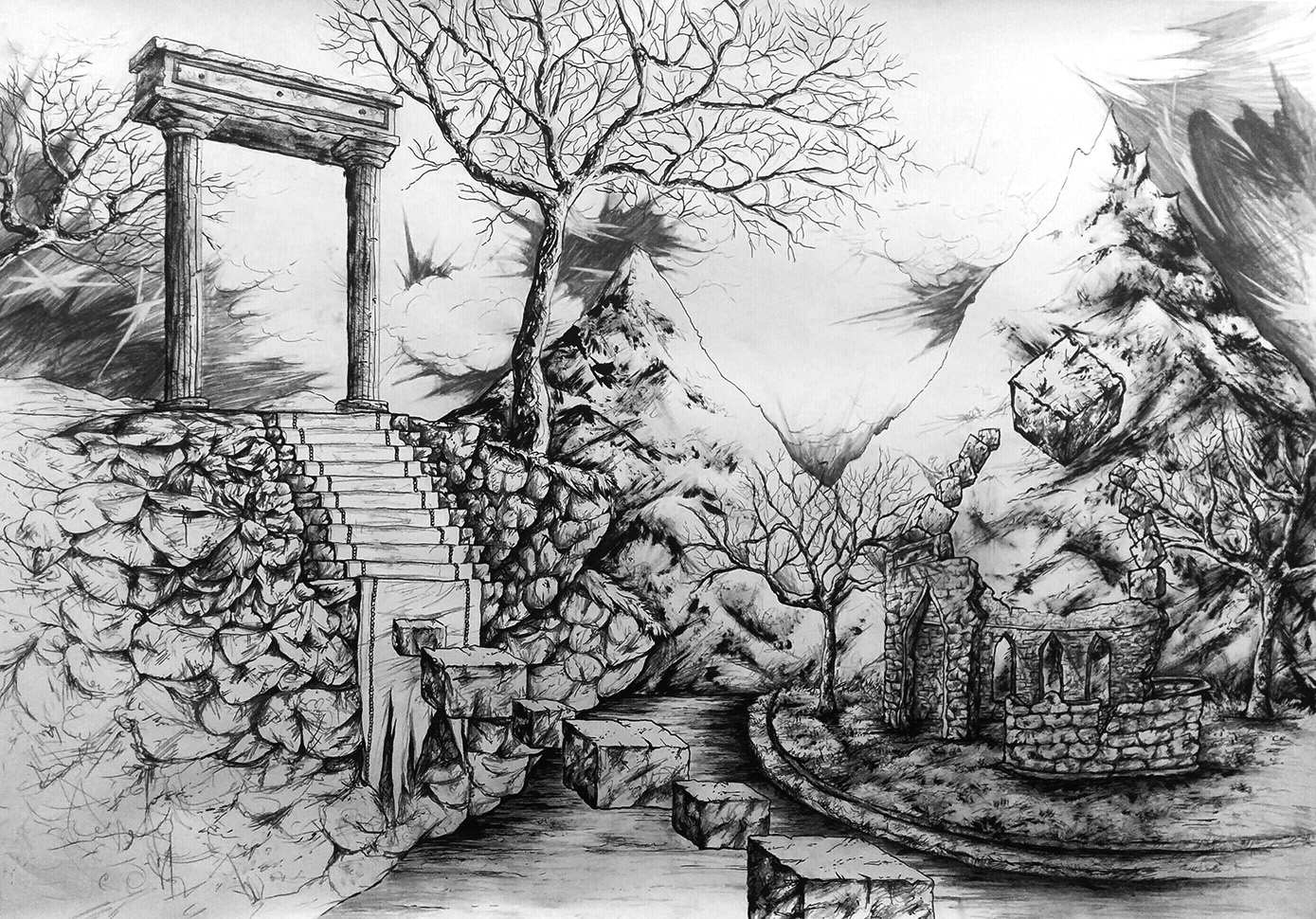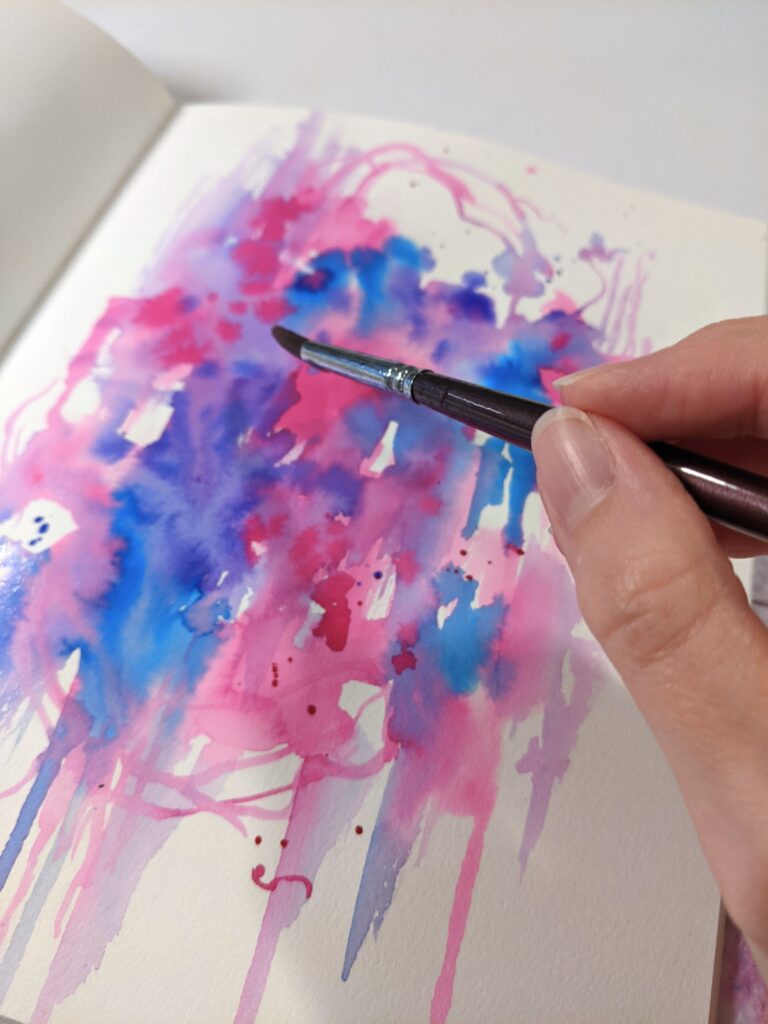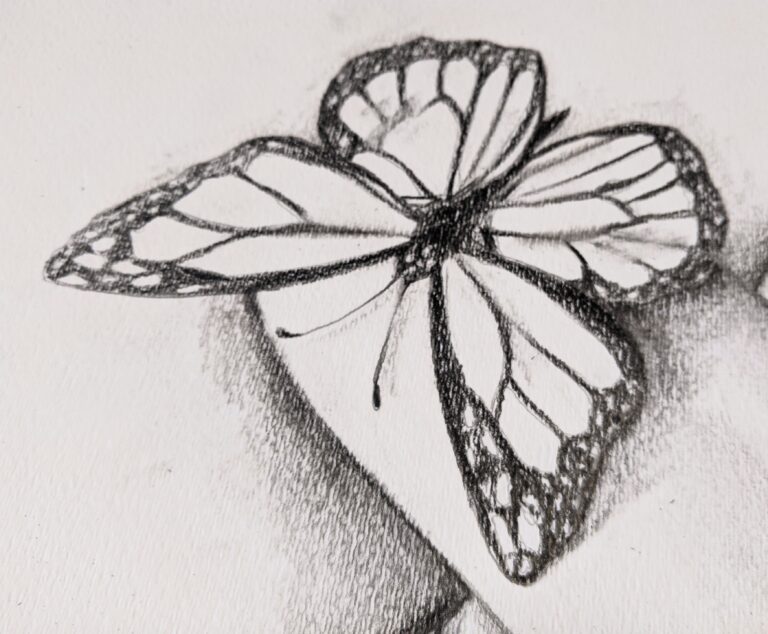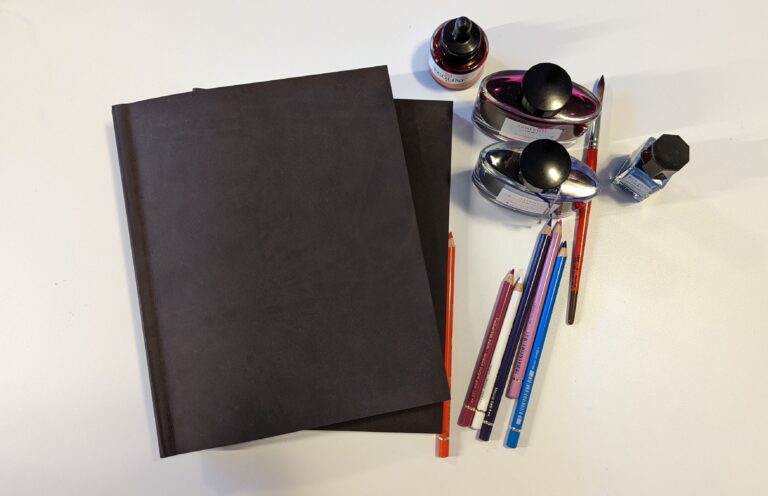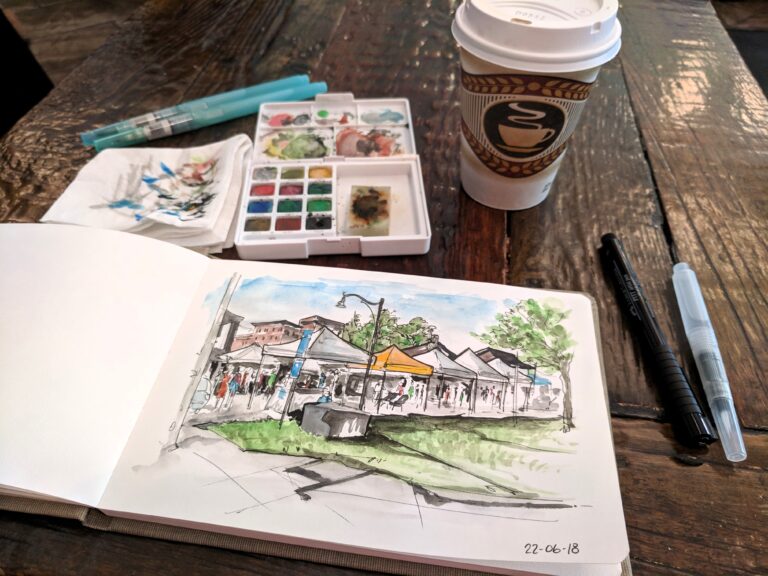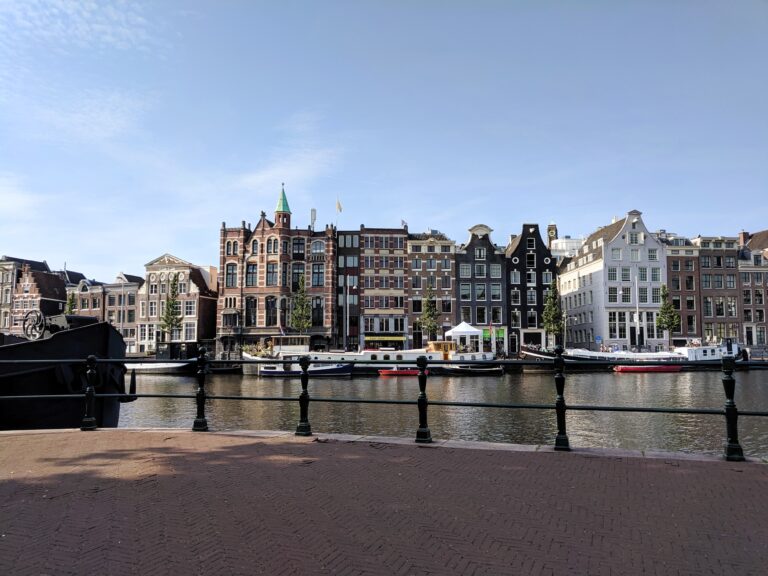Many artists wonder if art school is worth their time and investment.
In my 10 important lessons I wish I knew as a beginner artist, I covered some of my thoughts about art school and whether it might be the right fit for you.
I’d like to expand on the subject and cover the application process, what to include in your portfolio plus the pros and cons of pursuing a formal education.
Applying to art school in Canada
Here in Canada, depending on the province, there are different rules on when and how you can apply to art school.
In Quebec for instance, after secondary school (high school), you typically apply for CEGEP (Collège d’enseignement général et professionnel) or College.
The main difference is that high school for Quebec students ends in Grade 11 instead of 12, so CEGEP has become sort of a transitional period between high school and university.
We refer to them as pre-university programs that last around two years.
Public CEGEPs are affordable and offer a wide variety of art programs both in French and English in preparation for university.
Once you get to university, completing a Bachelor’s program will take you three years instead of four with your CEGEP diploma.
On the other hand, some CEGEP technical programs are highly specialized, such as 3D Animation, and will take you three years to complete instead of two. We don’t refer to these as pre-university programs since you can start working in the industry as soon as you graduate.
You can also choose to study at a private college for a very niche type of education, like fashion, but expect to pay a lot more than a public college.
The process is more straightforward for the rest of Canada. High school ends in Grade 12, and most Bachelor’s degrees take up to four years to complete.
Do extensive research before you commit
I highly recommend you research the type of art program that best suits you. There is no shortage of programs for all types of artists like ceramics, sculpture, painting & drawing, animation, etc.
Some of the most famous Canadian art schools include Concordia University in Montreal, the Emily Carr Institute of Art and Design in Vancouver, the Alberta University of the Arts in Calgary, the Ottawa School of Art and the New Brunswick College of Craft & Design in Fredericton.
College or university websites give detailed information about programs and requirements. Look at the type of degree, total duration, campus location, the course list and the application process.
You can even choose a Studio Arts major to cover a broad range of classes if you want to try out different media before you commit to one. Or you try a little of everything.
Be prepared to write a letter of intent and submit your portfolio as part of your application. You may have to submit your work digitally as many universities don’t accept physical portfolios anymore.
Also, if available, use the tuition calculator to get an estimate of the overall costs. In Canada, tuition costs are fairly low, especially in comparison to the United States.
And just so we’re clear, it’s never too late to go to art school. I once studied with a woman in her seventies and she worked just as hard as the rest of us.
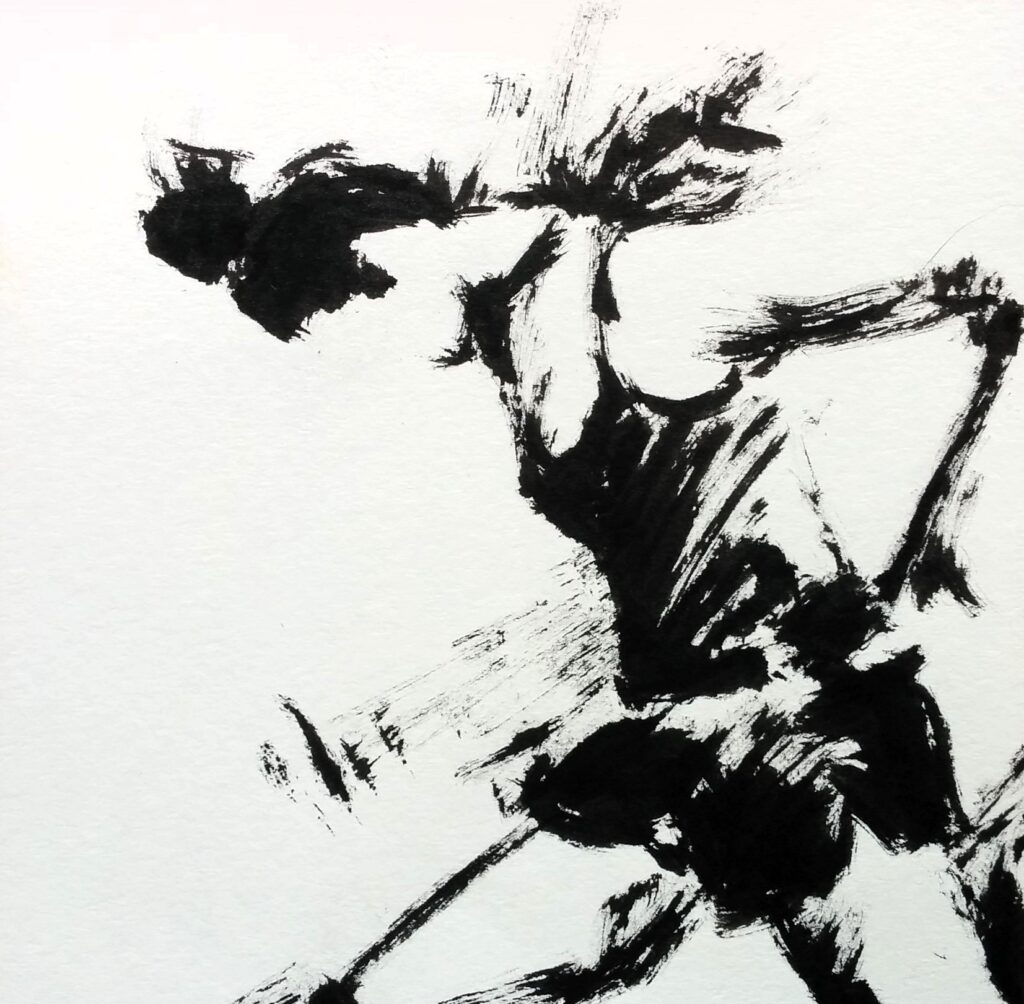
What to include in your portfolio
Start working on your portfolio as soon as you know what program(s) you’re aiming for.
For a Painting & Drawing BFA program, you would typically include 15 to 20 images of your best and most recent work, both finished and/or in progress (if you feel they are relevant) plus a letter of intent.
As I mentioned above, look at your program’s webpage and take note of their specific requirements. Some may even require an in-person screening test.
Even though I applied to art school more than ten years ago, I still remember parts of my submitted portfolio. I had included paintings, graphite portrait drawings, digital collages and more.
So my advice is to show your range as an artist and demonstrate knowledge of basic techniques, just like these portfolio examples from art prof. Include a variety of media, supports and subjects.
Pros and Cons
Based on my experience in art school, from a Painting and Drawing BFA program point of view, here is my list of pros and cons:
- Fun creative environment with large studio spaces where you can store your artwork.
- Fine Art classes from beginner to advanced levels (sculpture, drawing, painting, art history, etc.).
- Frequent critiques (feedback) of your work with teachers and classmates.
- Live model drawing or painting sessions to practice your observational skills.
- Real-time assessment from teachers during class time.
- Opportunities to take courses abroad such as a month-long advanced drawing course in Italy.
- Meeting other artists, networking and making friends.
- Not all teachers are great at providing constructive criticism and some have narrow views about Art.
- Overwhelming schedule that may require a lot of note-taking and extensive homework.
- It won’t necessarily prepare you for a professional career as a full-time artist. I found it lacking in that aspect. (From a BFA point of view)
- Expensive as in tens of thousands of dollars in Canada, but this number will differ depending on your area.
Who is art school best suited for?
Art school is best suited for individuals who want to build strong connections, who enjoy working in a structured environment and who want to push their art to the next level by learning about critical thinking.
You really need the right mindset to get the most out of art school. It can be harsh at first when you hear criticism about your work. In the long run, listening to constructive criticism from your peers will elevate your practice.
if you’re just trying to improve your technical abilities and you have a lot of self-discipline, learning with all the amazing free online resources for artists or local art classes might be enough for you.
In fact, I even wrote a step-by-step guide about teaching yourself how to draw with no experience. So I do believe you can find success without it.
Ultimately, going to art school is a personal decision. If you can afford it, I believe art school does make you a better artist in the long run. Being exposed to this unique creative environment alongside other talented artists felt motivating to me.
Just remember that your degree doesn’t automatically land you your dream job. Art is a highly competitive field so be prepared for a lot of rejection.
Key Takeaways
Applying to art school in Canada
- High school for Quebec students ends in Grade 11 instead of 12, so CEGEP is a transitional period between high school and university.
- The process is more straightforward for the rest of Canada. High school ends in Grade 12, and most Bachelor’s degrees take up to four years to complete.
Do extensive research before you commit
- College or university websites give detailed information about programs and requirements.
- Look at the type of degree, total duration, campus location, the course list and the application process.
- Be prepared to write a letter of intent and submit your portfolio as part of your application.
What to include in your portfolio
- 15-20 images of your best most recent work.
- Show your range as an artist and demonstrate knowledge of basic techniques.
- Include a variety of media, supports and subjects.
Pros:
- Fun creative environment with large studio spaces.
- Beginner and advanced level courses.
- Frequent critiques (feedback) of your work with teachers and classmates.
- Live model drawing or painting sessions.
- Opportunities to study abroad.
- Meeting other artists, networking and making friends.
Cons:
- Not all teachers are great at providing feedback.
- Overwhelming schedule.
- It won’t necessarily prepare you for a professional career as a full-time artist.
- Expensive.
Who is art school best suited for?
- For individuals who want to build strong connections with other artists, who enjoy working in a structured environment and who want to push their art to the next level by learning about critical thinking.

